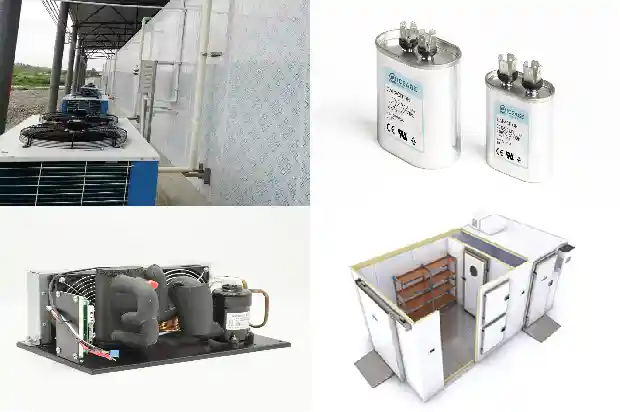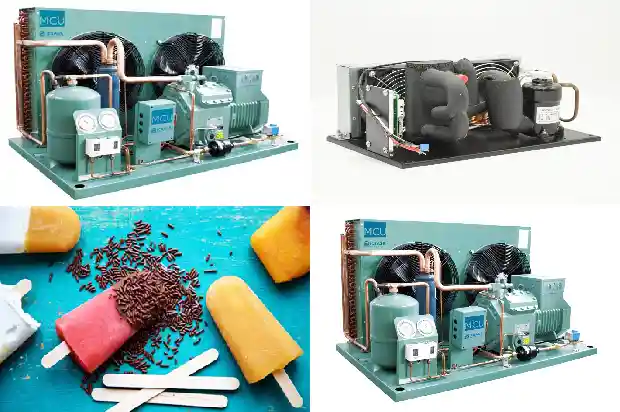Cleaning Procedures and Methods for Cooling Towers and Heat Exchangers
2025-01-05
In the refrigeration industry, cooling towers are mainly used for condensing and heat dissipation in fields such as cold storage, air conditioners, and heat pumps. Water is used as a circulating coolant. The heated cooling water in the tower body comes into contact with air flow for heat exchange, generating steam. The evaporation of water takes away heat, which is then dissipated into the atmosphere. This process plays a role in evaporative cooling, reducing water temperature, and ensuring the normal operation of the system.
Cooling towers are exposed to the outdoors all year round. The strong suction force of the fan causes a large amount of sediment and dirt to enter the tower. Prolonged operation will gradually reduce the heat dissipation capacity of the cooling tower. The water outlet holes of the water distributor are prone to blockage, and sediment and dirt can easily enter the cooling water system, directly affecting the normal refrigeration of the cooling water system. Therefore, to ensure the normal operation of the cooling water system, it is recommended to clean the cooling tower regularly.
I. Cooling Tower Cleaning Process
- Water Cleaning
The purpose of water flushing is to use a large flow of water to flush away loose dirt such as dust, sediment, detached algae, and corrosion products in the system as much as possible. At the same time, check for leaks in the system. The flow rate of the flushing water should be greater than 0.15m/s. After passing the flushing test, drain all the flushing water in the system. - Bactericidal, Algaecidal, and Slime Stripping Cleaning
The purpose of bactericidal and algaecidal cleaning is to kill the microorganisms in the system and peel off the biological slime attached to the equipment surface. After draining the flushing water, add bactericidal and algaecidal agents to the system for cleaning. Stop the cleaning when the turbidity of the system tends to balance. - Scale Removal and Cleaning with Cleaning Solution
The function of the cleaning solution is to use the cleaning agent to dissolve the scales and oxides in the operating system and dissolve them in water. Add the cleaning agent to the central air - conditioning operating system. The circulation pump conducts cleaning and drainage at the highest and lowest points to avoid air blockage and shower blockage, which may damage the cleaning effect. Regularly detect the concentration of the cleaning solution, the concentration of metal ions (Fe2+, Fe3+, Cu2+), temperature, and pH value. - Rinsing after Cleaning
This water flushing is to rinse away the residual cleaning solution and the removed impurities during cleaning. During the flushing process, continuously open the drain to flush away the impurities and residual liquid deposited in the short pipes. Continuously test the pH value and turbidity during flushing. End the flushing when the pH value and turbidity tend to be stable. - Pre - filming
The function of pre - filming is to form a complete anti - corrosion protective film on the metal surface or on the metal surface where the protective film has been damaged after cleaning.
Neutral Cleaning without Shutting Down
Add the neutral cleaning agent to the cooling water and refrigerant water systems while the unit is operating normally. Circulate and clean for about 30 days, then drain the cleaning solution, and add the maintenance agent to end the cleaning process. This solution has a relatively long cleaning time, but it can be carried out while the unit is operating normally without affecting its normal operation.
Since the cleaning solution is neutral, it does not corrode the system and equipment. During the cleaning process, the dirt in the system gradually dissolves, and there will be no scale pieces blocking the filter after cleaning.
II. Cleaning of Condenser and Evaporator
The condenser and evaporator are important components of the refrigeration unit.
It can effectively clean the heat transfer surface of the heat exchanger inside the copper tube, which is a prerequisite for chemical treatment.
Operation Process:
(1) Close the inlet and outlet water valves, open the drain valve, and check the closing status of the inlet and outlet water valves.
(2) Open the end cover to take a sample of scale and conduct scale removal tests with different concentration ratios of the scale remover.
(3) Connect the cleaning pump correctly according to the principle of low - in and high - out.
(4) Use an external water pump to fill the bucket with water and start the cleaning pump until the water is stable in circulation.
(5) Slowly add the scale remover to the bucket in batches.
(6) Rinse the cleaning pump with tap water.
(7) Open the end cover and use a tube cleaner to clean the tubes.
The condenser and evaporator are important components of the refrigeration unit.

It can effectively clean the heat transfer surface of the heat exchanger inside the copper tube, which is a prerequisite for chemical treatment.
Operation Process:
(1) Close the inlet and outlet water valves, open the drain valve, and check the closing status of the inlet and outlet water valves.
(2) Open the end cover to take a sample of scale and conduct scale removal tests with different concentration ratios of the scale remover.
(3) Connect the cleaning pump correctly according to the principle of low - in and high - out.
(4) Use an external water pump to fill the bucket with water and start the cleaning pump until the water is stable in circulation.
(5) Slowly add the scale remover to the bucket in batches.

(6) Rinse the cleaning pump with tap water.
(7) Open the end cover and use a tube cleaner to clean the tubes.
Related Articles
- Cleaning Methods for Different Types of Condensers in Refrigeration Devices
- Introduction to the Cleaning Processes and Methods of Heat Exchangers and Cooling Towers
- Cleaning Methods for Refrigeration Equipment
- Startup, Shutdown Procedures and Accident Handling of Various Pumps
- 8 Maintenance Procedures for Industrial Chillers
- Switching on and off procedures and operational logic of centrifugal chillers with cold water
- Introduction to Inspection and Handling Methods for Refrigerant Leak in Cold Storage
- Three Common Methods for Removing Water Scale from Water - cooled Condensers
- Reasons for Frost Formation in Cold Storage and Defrosting Methods
- Maintenance Methods for Small Modular Cold Storage Failures
- Common Cold - chain Storage Methods for Fruit and Vegetable Cold Storage
- Why Should Refrigerant Be Filled in Liquid Form? What Are the Filling Methods?
- For Computer Room Air Conditioners, Besides Air - cooled and Water - cooled, What Other Cooling Methods Are There?
- Maintenance Methods for Faults in Screw Refrigeration Air - conditioner Compressors
- Maintenance Methods for Refrigerant Leak in Air - conditioner Outdoor Unit
- Common Faults and Troubleshooting Methods of the Moving Mechanism of Piston Compressors
- Are you familiar with the detection and maintenance methods of air conditioner components?
- What are the precooling methods after the installation of cold storage?
